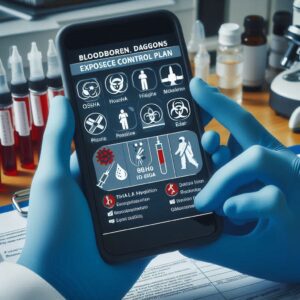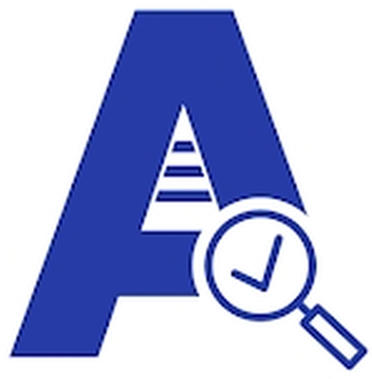OSHA Bloodborne Pathogens Exposure Control Plan
Creating and managing an OSHA Bloodborne Pathogens Exposure Control Plan (ECP) using eAuditor Audits & Inspections ensures compliance with OSHA standards, especially for industries like healthcare, laboratories, and other environments where employees may be exposed to bloodborne pathogens (BBP).

Here’s a step-by-step guide to creating and conducting a Bloodborne Pathogens Exposure Control Plan using eAuditor Audits & Inspections:
1. Create or Import a OSHA Bloodborne Pathogens Exposure Control Plan ECP Template
- Log in to eAuditor Audits & Inspections and search for an existing Bloodborne Pathogens Exposure Control Plan template or create a new one.
- You can customize the template based on OSHA’s BBP standard (29 CFR 1910.1030). The plan should include sections on:
- Exposure determination: Identifying job classifications where exposure to blood or other potentially infectious materials (OPIM) is possible.
- Methods of compliance: Describing practices such as universal precautions, engineering and work practice controls, and personal protective equipment (PPE) requirements.
- Hepatitis B vaccination: Protocol for offering vaccination to employees exposed to bloodborne pathogens.
- Post-exposure evaluation and follow-up: Procedures for handling exposure incidents.
- Communication of hazards: Training and labeling systems for employees to understand risks.
- Recordkeeping: Maintaining logs of exposure incidents and training records.
2. Customize Sections Based on Your Workplace
Tailor the template to your specific workplace conditions and job roles. Key sections to focus on include:
- Job Classifications: List all job classifications where employees have occupational exposure to bloodborne pathogens.
- Control Methods:
- Universal Precautions: Emphasize that all blood and bodily fluids are treated as infectious.
- Engineering Controls: Sharps disposal containers, self-sheathing needles, etc.
- Work Practice Controls: Hand washing, safe handling of needles, and disposal procedures.
- PPE Requirements: Types of PPE required (e.g., gloves, face shields, gowns).
3. Assign the Plan to Relevant Employees and Teams
- Assign the Bloodborne Pathogens Exposure Control Plan to employees or teams that handle biohazardous materials or are exposed to potential risks.
- Make sure the staff is notified and provided with the appropriate PPE and training.
4. Conduct Regular Inspections and Audits
Use the eAuditor Audits & Inspections app to carry out audits that review compliance with the Exposure Control Plan. The audit checklist should include:
- PPE availability and usage.
- Sharps container placement and condition.
- Sanitization and handwashing stations.
- Hepatitis B vaccination documentation.
- Exposure incident reports.
5. Respond to Exposure Incidents
- In the event of an exposure, eAuditor Audits & Inspections can help document the incident immediately:
- Record the date, time, and location of the exposure.
- List the employee(s) involved, the substance exposed (e.g., blood, bodily fluids), and the circumstances of the incident.
- Use photos or videos to document exposure areas and conditions.
- Assign follow-up actions, such as medical evaluation, testing, or offering post-exposure prophylaxis.


6. Track Corrective Actions and Compliance
- eAuditor Audits & Inspections allows you to create Action Plans for any violations or non-compliance identified during audits or exposure incidents.
- Assign corrective actions to specific individuals (e.g., removing contaminated waste, replenishing PPE, or updating safety signage).
- Set deadlines and track the resolution of these actions through the app.
7. Training and Hazard Communication
Ensure that all employees undergo regular training on:
- The risks of bloodborne pathogens.
- Proper use of PPE.
- Emergency procedures in case of an exposure incident.
eAuditor Audits & Inspections can help track employee training dates and generate reminders for re-training sessions as required by OSHA.
8. Generate Reports for Compliance
- After conducting an audit or reviewing exposure incidents, eAuditor Audits & Inspections can generate reports, including:
- Compliance score.
- Photos or videos showing compliance or issues.
- Records of exposure incidents.
- Action items for non-compliance.
- These reports can be exported as PDFs or Excel files and shared with safety managers, HR, or OSHA auditors as necessary.
9. Recordkeeping and Monitoring
- eAuditor Audits & Inspections helps with OSHA’s recordkeeping requirements by centralizing all documentation. Use it to:
- Log exposure incidents and track follow-up actions.
- Maintain training records for all employees.
- Store vaccination records and documentation of employees who decline the Hepatitis B vaccine.
10. Analyze Trends and Improve Safety
- Use eAuditor’s analytics tools to track trends in exposure incidents or areas of repeated non-compliance.
- Identify recurring issues (e.g., insufficient PPE in certain areas) and take preemptive action to mitigate risks.
- You can also track compliance scores over time to see improvements or highlight areas needing further attention.
Benefits of Using eAuditor Audits & Inspections for a OSHA Bloodborne Pathogens Exposure Control Plan ECP
- Real-time reporting: Incidents are reported and tracked immediately, reducing the risk of delays in corrective actions.
- Automated reminders: Keeps you on track with regular inspections, trainings, and medical evaluations.
- Centralized records: Easily accessible documentation of exposure incidents, training, and compliance for OSHA inspections.
- Mobile and accessible: Audits, reports, and records can be conducted and accessed on any mobile device.


By using eAuditor Audits & Inspections for the Bloodborne Pathogens Exposure Control Plan, you ensure compliance with OSHA standards, improve workplace safety, and have a streamlined, digital process for managing exposure risks and actions.
